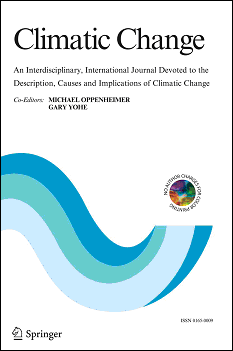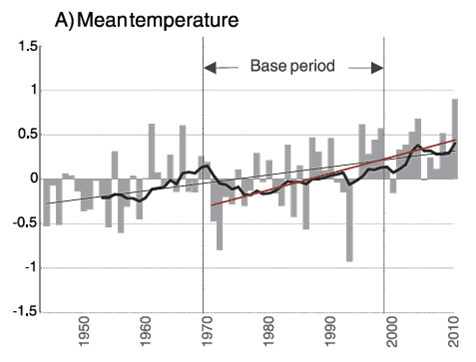New scientific paper: “Assessment of global warming on the island of Tenerife, Canary Islands (Spain). Trends in minimum, maximum and mean temperatures since 1944”

The article entitled “Assessment of global warming on the island of Tenerife, Canary Islands (Spain). Trends in minimum, maximum and mean temperatures since 1944” has just been published In Climatic Change, and is available as ‘Online First’ on SpringerLink:
http://www.springerlink.com/content/6942417138l41j71/
Full reference:
Martín, J.L., J.Bethencourt, and E. Cuevas-Agulló, Assessment of global warming on the island of Tenerife, Canary Islands (Spain). Trends in minimum, maximum and mean temperatures since 1944, Climatic Change, DOI 10.1007/s10584-012-0407-7, 2012.
This is the first paper dealing the “global warming” assessment in the Canary Islands. It has been written by researchers at the Canary Islands Agency for Climate Change and Sustainable Development, and at the Meteorological State Agency of Spain.
Temperature variation is studied at different altitudes and orientation on the island of Tenerife, according to the trends in the mean, maximum and minimum at 21 meteorological stations of the Meteorological State Agency of Spain (AEMET). Reference series are obtained by sectors, along with a representative overall series for Tenerife, in which temperature shows a statistically significant growth trend of +0.09±0.04°C/decade since 1944.
Night-time temperatures have raised most (0.17°C±0.04°C/decade), while by day they have been more stable. Consequently, the diurnal temperature range between day and night has narrowed. By regions, warming has been much more intense in the high mountains than the other sectors below the inversion layer between 600 and 1,400 m altitude, and progressively milder towards the coast. The temperature rise on the windward (north-northeast) slopes is greater than on the leeward side and could be related to the increase in cloudiness on the northern side. The general warming of the island is less than in continental areas at between 24 and 44ºN, being closer to the sea surface temperature in the same area. This is probably explained largely by the insular conditions. In fact warming is more evident in the high mountains (0.14±0.07°C/decade), where the tempering effect of the ocean and the impact of changes in the stratocumulus is weaker, being similar to the mean continental values in the northern hemisphere.

Trend in the evolution of mean annual anomalies in temperatures on Tenerife. The curve represents the moving average factor 10, and the lines correspond to linear regressions for the periods 1944–2010 and 1970–2010, respectively.






